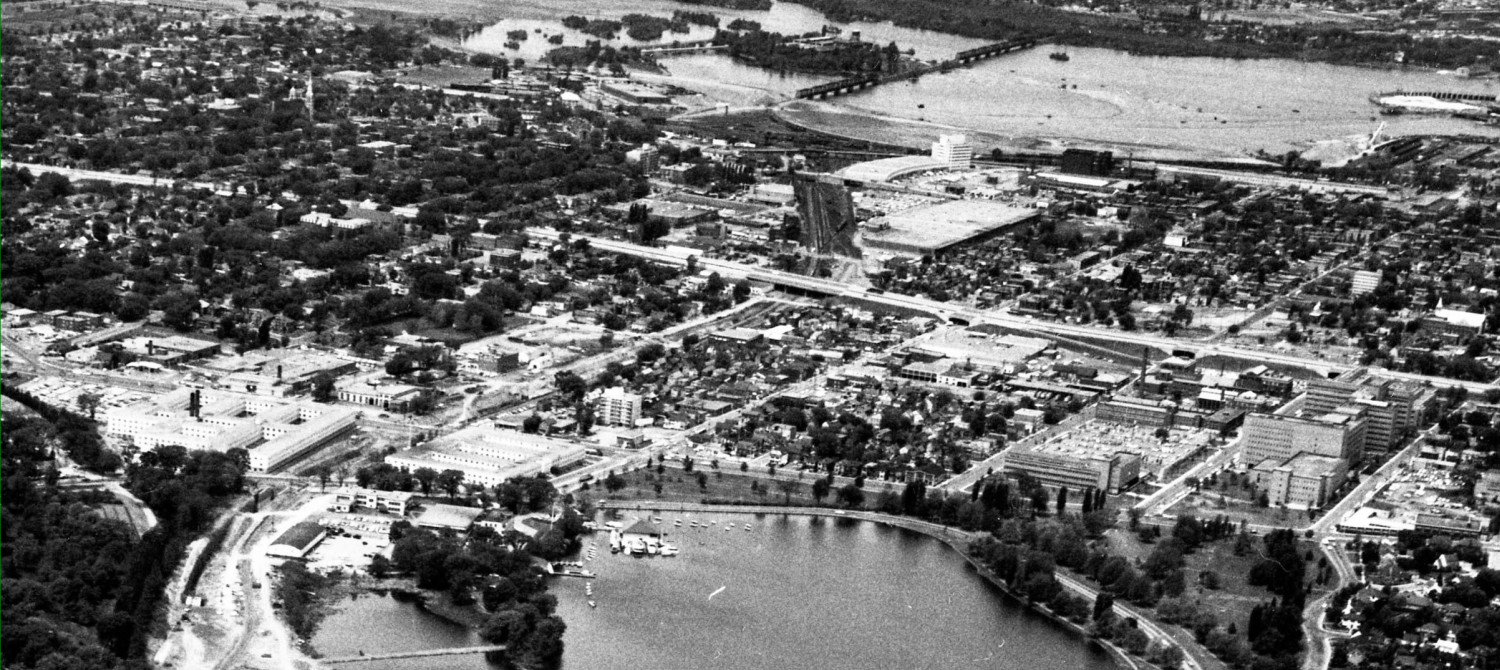I’m certainly no purist on Heritage, and I can have a pretty utilitarian view of preserving heritage when convenient, by changing it up when I think it can be made more useful.
I was puzzled a few years ago when the City decided the best place to run a giant water main was down the centre of the Heritage-designated aqueduct through LeBreton Flats. Historic stuff, that; Thomas Keefer and all.
Still, the pipe isn’t exactly intrusive when the water is in the aqueduct. It’s just that it’s deceiving, since what you see (water, historic aqueduct) isn’t really what is there (its a convenient utility corridor).
The aqueduct has been drained for some months now, while the city “maintains” the water main. They are also installing new wiring to the control gates at the aqueduct inlet on the western part of the Flats. And where did they run the new wiring? (look on the left side of the pipe)
I must confess to some mixed feelings here. After all, I am a proponent of using waterways as currently untapped transportation corridors. Not the freeway-above-the-river type, or the bury-Pinecrest-Creek-and-then-name-the-parkway-after-it sort of thing.
I have been known to suggest that maybe the best way to get a N/S rapid transit line to the Glebe, Ottawa South, and Carleton U might be to either return the Colonel By Drive right of way to rail (for streetcars — and extend them over the Alexandra bridge too). That already irritates people who think the current road and grass is now a cultural heritage thing that must be protected.
At the risk of upsetting more people, I have suggested we might bury the trains in a tunnel just a foot or so under the canal bed. Cut and cover. Underground stations would connect to neighborhoods on both sides of the canal, plus provide handy crossings for peds and cyclists without having to kow tow to UN World Heritage bureaucrats. If football fans get too rowdy when leaving Lansdowne Park, let a foot or so of water into the stations to cool their heels.
But if it is so wrong to bury a subway under the Rideau Canal, why is is acceptable to use the LeBreton aqueduct for a utility trench?




Is it even technically feasible/safe to have a subway under a skating rink? Do you know how many years the canal would need to be closed for? How can you possibly compare these two situations seriously?
I don’t know, Alex. The City did put that “Rink of Dreams” thing on top of the parking garage at City Hall, with no apparent ill effects yet (other than ugly accessories, but I digress). And the O-Train goes under the Canal near Dow’s Lake through a tunnel – and before it full fledged freight trains in the 80s and 90s. I can’t recall seeing open water or families suddenly disappearing through thin ice or anything similar at that location.
The construction would probably be phased in over a few years during the closed-to-navigation season (which is now longer!) and in some places coffer dams would be viable to maintain a surface for skating.
With regard to the period of closure, the recent water main replacement on Bronson, Bank, Wellington and Richmond provides a useful guideline.
The work was a “cut and cover” operation. In some locations a single lane was kept open (Richmond, Wellington West) and in others the street was completely closed (Bronson, Bank).
What I find difficult to understand is that once the city completes the paving, sidewalk and street furniture installation, they begin to dig the street up again.
It seems that with a small amount of planning it would be possible to build an underground “service corridor” or “service tunnel” through which water, sewer, electrical and communications can be run. Use the same basic process as was used for the bike path tunnel under Somerset Bridge. Create a permanent underground services facility with access points so that the streets do not need to be torn up and repaved each month, the service lines are immediately accessible, new services can be run with minimal disruption (fiber optic cable).
Build a slightly larger tunnel and you could run light rail through it in addition to the services. If you look at the size and depth of the excavations on Somerset in China town and Bronson you wouldn’t need to remove much more material to create a subservice transit tunnel with a parallel services conduit. The cost savings on 20 future years of digging, repaving, digging, repaving, digging, repaving . . .